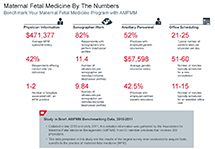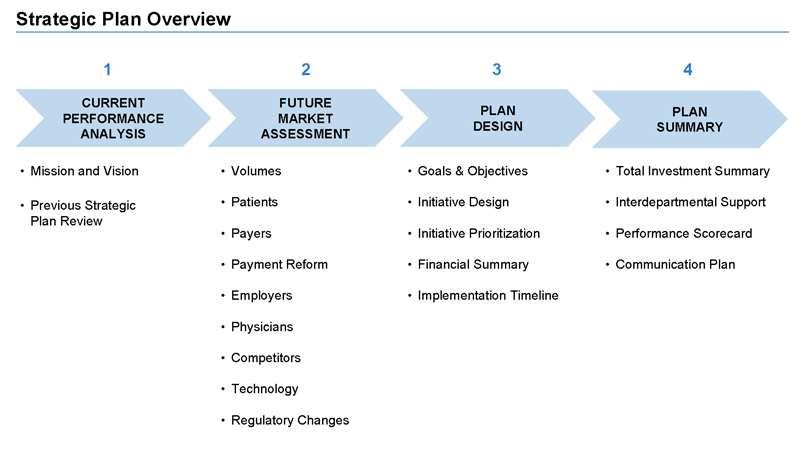Auto logout in seconds.
Continue LogoutThe American College of Obstetricians and Gynecologists (ACOG) has released an 11-page "committee opinion" that offers sweeping recommendations to fundamentally change postpartum care, saying that new mothers need to be seen sooner and more often after giving birth, Nina Martin writes for NPR and ProPublica.
Learn the 9 elements of top perinatal patient safety programs
The problem with postpartum care in the United States
The recommendations come amid growing concerns about maternal mortality in the United States, Martin writes. More than 700 women die from causes related to pregnancy and childbirth each year, while more than 50,000 suffer life-threatening complications, according to ProPublica.
A CDC Foundation report found that more than 50% of maternal deaths occur postpartum, meaning that the days and weeks following childbirth are pivotal for a new mother's health, Martin writes.
But ACOG in its opinion wrote that currently the postpartum period is "devoid of formal or informal maternal support," as the U.S. health care system places a greater emphasis on the safety of the baby than of the mother. Under the current system, newborns often have their first pediatric visit a few days after birth, Martin writes, while the mother typically is not seen until four to six weeks postpartum.
And many women aren't seen by a doctor postpartum at all: ACOG estimates as many as 40% of women don't go to their postpartum visit, with rates climbing even higher for low-income women of color. That's due in part to the fact that an estimated 23% of women return to full-time employment within 10 days of giving birth, so they may not be able to skip work for a doctor's visit. Childcare and transportation issues can present additional barriers to women seeking care.
Under the current system, Alison Stuebe—who teaches in the department of obstetrics and gynecology at the University of North Carolina School of Medicine and headed the task force that drafted guidelines—said, "The baby is the candy, the mom is the wrapper. And once the candy is out of the wrapper, the wrapper is cast aside."
ACOG's recommendations
ACOG's new guidelines recommend doctors see their postpartum patients much earlier: no later than three weeks after delivery, and even earlier if patients have suffered from severe hypertension, Martin writes. New moms also are encouraged to return as often as needed, with postpartum visits potentially continuing up to 12 weeks after delivery, depending on the woman's symptoms and history. Ideally, the final visit would include "a full assessment of physical, social, and psychological well-being," according to the guidelines.
ACOG in their guidelines also urged providers to discuss the long-term health risks associated with certain pregnancy complications, including preterm delivery, preeclampsia, and gestational diabetes, Martin writes. "These risk factors are emerging as an important predictor of future [cardiovascular disease]," ACOG wrote. "[B]ut because these conditions often resolve postpartum, the increased cardiovascular disease risk is not consistently communicated to women."
The guidelines also urge providers to help patients create a postpartum care plan while they're pregnant, which includes creating a support team of family members and friends.
Why implementing these recommendations may not be easy
One of the biggest challenges to implementing ACOG's recommendations is insurance reimbursement, Martin writes. According to Auguste, payment for prenatal care, delivery, and one postpartum doctor's visit are commonly bundled into one fee, which creates an incentive for doctors to only see their patients once. Patients with Medicaid coverage may face additional obstacles, as many states end their Medicaid coverage at two months postpartum.
Haywood Brown, ACOG's outgoing president, said that changing how postpartum care is reimbursed is critical, which is why insurance representatives were included on the ACOG task force the created the guidelines, Martin writes. "I want to make sure that I get some employee health plans and some health systems to adopt this nationally," Brown said (Martin, ProPublica/NPR, 4/23).
9 elements of top perinatal patient safety programs
Perinatal care is a high-volume service, accounting for one-fifth of all hospital stays. Yet it is also highly variable, with significant differences in complication rates for both vaginal and cesarean deliveries between hospitals nationwide.
This toolkit is designed to help hospitals seize the opportunity to strengthen perinatal patient outcomes. It includes best practices and resources collected from organizations that have successfully improved labor and delivery care by reducing clinical variability.
Don't miss out on the latest Advisory Board insights
Create your free account to access 1 resource, including the latest research and webinars.
Want access without creating an account?
You have 1 free members-only resource remaining this month.
1 free members-only resources remaining
1 free members-only resources remaining
You've reached your limit of free insights
Become a member to access all of Advisory Board's resources, events, and experts
Never miss out on the latest innovative health care content tailored to you.
Benefits include:
You've reached your limit of free insights
Become a member to access all of Advisory Board's resources, events, and experts
Never miss out on the latest innovative health care content tailored to you.
Benefits include:
This content is available through your Curated Research partnership with Advisory Board. Click on ‘view this resource’ to read the full piece
Email ask@advisory.com to learn more
Click on ‘Become a Member’ to learn about the benefits of a Full-Access partnership with Advisory Board
Never miss out on the latest innovative health care content tailored to you.
Benefits Include:
This is for members only. Learn more.
Click on ‘Become a Member’ to learn about the benefits of a Full-Access partnership with Advisory Board
Never miss out on the latest innovative health care content tailored to you.


